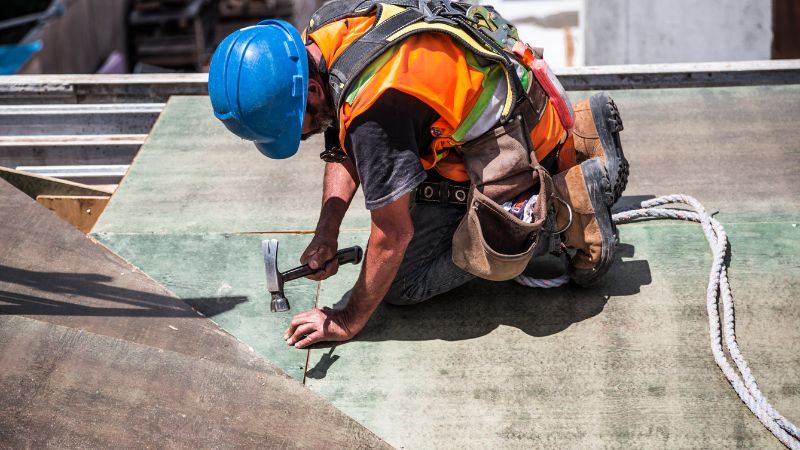Categories
How To Get A Renovation Mortgage Loan (and Is It the Right Option for You?)

Whether you're a first-time buyer, a property developer, or you’ve inherited a property in desperate need of some love, a renovation mortgage loan can be a very helpful source of funds.
When you find a property as a 'fixer-upper' with a view to either selling it on for a profit, letting it out, or remortgaging it to live in yourself, you'll need an appropriate finance package to help you see the project through.
Obtaining a conventional mortgage for a renovation project may not be an option, and that’s where renovation mortgages are used instead.
This guide explains everything you need to know about renovation mortgages, how they work, how to apply for one, and whether it’s the right path to finance for your circumstances.
Compare Funding Options

What is a Renovation Mortgage?
A renovation mortgage is a specialist type of loan that enables a borrower to obtain a loan equal to a property's post-renovation value. It is designed to help property owners finance the cost of renovating or remodelling their property.
This gives the buyer the funds to purchase and cover the refurbishment costs. The extra finance taken out for refurbishment is paid off in monthly instalments alongside your mortgage.
If you’re buying a house that needs more than a quick lick of paint and perhaps a wall knocked through, you may not be able to use standard mortgage finance. Instead, many lenders offer a renovation mortgage, with the funds released in instalments as the renovation work progresses.
During the project, you may need to have your property inspected repeatedly, which involves extra fees.
Depending on the mortgage type, you may be able to remortgage to a standard property loan once the home improvements are complete.

Renovation Finance Calculator
Use our renovation finance calculator below to get an idea of how much a loan could cost you.
Compare Funding Options
How Much Does a Renovation Mortgage Cost?
Renovation mortgages can be more expensive than standard residential mortgages, and they often come with higher interest rates and fees. Your particularly quote will depend on:
- The scope of the renovation
- The lender’s appetite within the current market
- Your specific circumstances
As far as the specific costs associated with a renovation mortgage product, you can expect:
- Interest rates starting from around 5% (but potentially exceeding 7%)
- Arrangement fees that can reach several thousand pounds
Of course, there are other costs that come with a renovation project and it's common for renovation projects to go over-budget. So, diligent planning and research before you begin is essential.
Researching the cost of materials, labour, and other expenses helps you establish a realistic budget for your renovation project. Proper planning enables you to allocate resources effectively and avoid overspending throughout the renovation.
Conduct Thorough Market Research
A step commonly overlooked by first-time renovator-developers is the need for rigorous research before getting started.
You need to determine whether there is demand within the area for the standard you intend to achieve.
Owner-occupiers in areas with less demand may enjoy the benefits of their renovations for many years to come. They can hope to recoup the cost of their additional investment if the area gentrifies around them and similar properties drive up surrounding values.
But being the "best house in the worst street" is not the situation you want to find yourself in when you come to sell.
When looking at local values, don't just ask estate agents. Check the prices achieved at sale for directly comparable properties.
For example, you could look into properties that sold:
- Within the same school catchment area
- Within a similar distance to amenities
- That also have a south-facing garden
- With any other distinct features your property will have
Calculate How Much You Need to Buy the Property
Buying a property to renovate is going to come with several costs. Some need to be paid sooner than others, but all need to be budgeted for.
The first costs you will need to cover are most likely to secure the property itself. Here’s a snapshot of the typical costs associated with buying a property:
- Purchase price
- Finance arrangement fees (if necessary)
- Conveyancer/solicitor fees
- Valuation fees
- Property/structural survey
- Stamp Duty Land Tax
If you’re purchasing a house to renovate and sell, most mortgage lenders want you to contribute a deposit of at least 25% into the deal.
When buying an abandoned or uninhabitable property, you may be exempt from certain costs such as Stamp Duty Land Tax. Alternatively, you may qualify for a tax refund at a later date.
For commercial projects, you may have to pay VAT on top of the purchase price. In 2025, the standard rate is set at 20%.
Determine How Much Planning Permission Will Cost
One of the main reasons for buying a property to renovate is the high likelihood that you will drastically increase its value. Popular renovation works that add significant value to a property include:
- An extension
- A loft conversion
- A basement
For this type of work, you will likely require planning permission. While obtaining the necessary permission can often be seen as overly bureaucratic, it’s an important step to get right.
It is possible to apply for retrospective planning permission to amend honest mistakes, but if you get rejected you could be forced you to reverse all the hard work you put in.
Costs involved in obtaining planning permission
- Statutory application fees (£206 to £462 per 0.1 hectares)
- Council charges (including pre-application costs)
- Community Infrastructure Levy (CIL)
- Site survey fees (£600-£1,500)
Compare Funding Options
Take Professional Fees into Account
Professional fees are the largest cost you will need to build into your planning budget. These fees will also be highly dependent on the specific renovation work you are looking to do and the current state of the property you want to renovate.
- Architect / architectural technician/building surveyor/draughtsman (pre-application sketches and detailed drawings, plus any amendments: calculated as a percentage of the overall build price – from £300 to £15,000)
- Planning consultant (pre-application advice: £300-£1,000; planning application: £750-£2,000; planning appeal: £1,000-£3,000)
- Solicitor
- Land surveyor
- Structural surveyor
- Arboriculturist (£300-£1,000); ecologist (Phase 1: £600-£1,200); drainage / highways archaeological / environmental assessments (£600-£1,500 each)
These estimated fees may not include VAT and expenses.
Assign a Budget for Unforeseen Costs
Property renovation projects are renowned for going past target deadlines, and over budget. This is due to the high likelihood of unforeseen costs becoming apparent and necessary as work progresses.
The best practical approach is to calculate the most apparent project costs:
- Purchase price
- Design and planning application
- Contractor costs
- Project management costs
- Materials, fixtures and fittings
- Cost of property finance
But you also need to allocate budget for delays and unforeseen costs, which can increase the price of even the best-managed projects.
Experienced developers advise adding at least 10% as contingency costs.
Is a Renovation Mortgage Loan the Best Option?
There are key constraints that come with renovation mortgages, which are important to understand before you make any kind of decision. A renovation mortgage could still be the most appropriate way to finance your renovation project.
However, there are a few things you should be aware of.
Time to Process
Renovation mortgage loans can take up to 6-8 weeks to process. Many of the most promising properties for renovation are sold at auction. In this scenario, final and complete settlement is usually required within 28 days of hammer-fall, which is much sooner than conventional mortgage finance can be arranged.
Extra Costs
During the course of a renovation mortgage, you will likely have to pay additional fees to monitor the renovation work as it progresses. Lenders often release the finance granted by a renovation mortgage in stages, which are dependent on inspections to verify the work being done.
Lack of Flexibility
Once the renovation work is successfully completed on your property, you will remain tied into a mortgage loan for a minimum term of 5 years (and up to 25 years), often with less favourable terms than you could find elsewhere.
Eligibility Requirements
A number of high street banks and building societies offer renovation mortgages, but the vast majority only consider loans for habitable properties, which can rule out many of your renovation plans.
Most high street banks and lenders won’t give you a renovation mortgage loan if:
- The property is derelict or in very poor condition, such as significant damage to the roof
- The property is considered 'uninhabitable’, i.e., no kitchen, no functioning bathroom/plumbing, electricity or heating
- The property needs conversion (a change of use)
But alternative finance options are available for your renovation project, allowing you to transform your property into a more liveable and aesthetically pleasing space.
4 Alternative Types of Finance for Refurbishing a Property
A standard renovation mortgage loan could be the best option for you, but you should also consider other types of finance that may be more suitable for your specific circumstances.
The right form of finance for your renovation will largely be determined by:
- How much money you need to borrow
- Whether you already own the house or you’re buying it
- How quickly you need to access the finance
- Whether the property is defined as “habitable”
Here are some alternative methods of securing the funds you need to complete your renovation project.
1. Renovation Bridging Loan
Smart property developers frequently use bridging loans to fund renovation opportunities when they arise - quickly, at a lower cost, and with all the flexibility needed, whether the property is sold or let.
You only pay interest for the time period the loan is used. For example, if you use a bridging loan to renovate a property, then sell that property in three months. You would be able to pay off the bridging loan with the proceeds of the sale, and you would only pay three months of interest. If it took you six months to sell the property, you would pay six months of interest, and so on.
Key takeaways:
- Faster access to finance than a mortgage product
- Loan amount is typically secured against a property
- Maximum loan value depends on the asset it’s secured against
- Typical interest rates from 0.5% to 2% per month
- Borrowing terms are typically 12-24 months
- Amount paid back when property is sold, or a mortgage is secured
2. Remortgaging
If you’re looking at doing a major renovation to your home or a rental you already own (for example, you’re building an extension), the most straightforward way of accessing the additional funding you need might be to apply for a "further advance" and remortgage.
Your lender’s willingness to increase your borrowing will depend on:
- An up-to-date payslip to prove you can afford the additional borrowing
- The estimated value that the proposed work will add to the house
- The amount of equity you currently have in your home
For example, an additional £25K of borrowing on an £800K mortgage will probably be acceptable; an additional £25K on top of a £140K mortgage might not be accepted. It’s all dependent on how much leeway you have within your currently agreed loan-to-value ratio (LTV).
A further advance from your current mortgage lender can quickly be arranged if they agree. Finance could be secured in days, rather than weeks.
Key takeaways:
- Finance secured quickly from a lender you’re already dealing with
- You will need to prove that you can afford the additional borrowing
- Borrowing amount available is dependent on LTV of your existing mortgage
- The arrangement fee could be several thousand pounds
- The amount is repaid over the lifetime of your mortgage, which ends up costing you more in the long run
- If your mortgage is currently on a low rate, and your mortgage lender won't let you borrow the additional amount at the same rate, the whole loan could end up being restructured at a new, less desirable rate - meaning you could significantly lose out.
3. Second Charge Mortgage
Also known as a homeowner loan, this is borrowing secured against the value of your current home. It’s a mortgage that “sits behind” your primary mortgage.
A second charge mortgage is arranged with a separate lender from your primary mortgage lender (but with their permission), so it doesn’t affect your primary mortgage rate.
Interest rates are higher than standard mortgage rates due to the fact that the lender takes on more risk. This is because, in the event that you’re unable to make the monthly repayments on your borrowed amounts, the primary mortgage is always treated as the priority.
The loan amount is repaid over an extended period, which keeps your monthly repayment costs low but increases the overall cost of borrowing in the long run.
Application fees are low, and if the LTV on the amount you want to borrow falls under 60%, a valuation isn’t required. In this case, a second charge can be arranged as quickly as in a week.
Key takeaways:
- Finance secured in as little as one week
- Loan amount is secured against the same property as your primary mortgage
- Borrowing amounts up to 100% of the value of your home (minus your existing mortgage)
- Interest rates are higher than standard mortgage rates, reflecting the risk to the lender, who will be second in line for repayment in case of difficulty
- Borrowing terms typically vary from 1-20 years depending on amount borrowed
- This is a riskier type of borrowing: your house is at risk if you’re not able to repay
4. Personal Loans
You can approach your bank (or any lender) for a personal loan. This would be 'unsecured' lending—that is, it’s not tied to the value of an asset. That’s less risky for you, but personal loans can be expensive. Applications can usually be done online, and same-day approvals may be possible.
Key takeaways:
- Same-day approvals
- Loan amount is unsecured (not tied to an asset)
- Maximum loan value is typically around £25,000
- Interest rates from 5.9% to 29.9% (depending on the amount and the term)
- Borrowing terms up to five or six years
- Amount paid back with regular monthly repayments
Why Choose a Renovation Bridging Loan Over a Renovation Mortgage?
A renovation loan, rather than a renovation mortgage, could be your best option. Renovation loans are also known as home improvement loans, refurbishment loans, refurbishment bridging loans (or simply a bridging loan). They provide you with a short-term finance solution, in contrast with mortgage products which can last 15-40 years.
Here are the key advantages of using a bridging loan for renovation, rather than a renovation mortgage.
Profitable Exit Strategies
The short-term nature of a refurbishment loan is a key advantage for anyone looking to mortgage, remortgage, or sell a property after refurbishment work is complete.
Renovation work typically increases the value of a property.
This results in an improved loan-to-value (LTV) ratio on mortgage or remortgage applications - which enables you to access cheaper borrowing. And you can do so without having to pay the early repayment penalties associated with standard mortgages.
If you simply want to sell the property when it’s refurbished, you can use the proceeds to pay back the bridging loan. Any profits can then go towards securing your dream home or investing in your next renovation project.
Speed in the Market
Approvals depend chiefly on a straightforward valuation of the property offered as security for the loan. This is unlike a mortgage product, where decisions also assess the borrower’s earnings and credit rating.
This means that short-term bridging finance can be arranged quickly – with fewer checks, and less paperwork. Loans are often completed in a matter of weeks, and sometimes literally within days.
The fast nature of bridging finance puts you in the position of a cash buyer in the market. This is an exceptionally strong card to hold, particularly when competing for an auction property – where complete settlement is a time-sensitive issue, and mortgage finance is simply too slow.
Flexibility on Use and Terms
Bridging loans are a very flexible form of finance. You can use bridging finance to help you with:
- Buying a property at auction
- Renovation costs
- Self-build projects
- Residential conversions and extensions
- Commercial and buy-to-let renovation projects
Repayment terms are also flexible. Bridging finance can typically be repaid any time after a month’s duration, and you only pay for the amount of time you have the loan. You can think of it as a pay-for-what-you-use product.
For example, let’s say you take out a bridging loan with a 12-month term, and you fully repay the loan within four months. Then, you would only pay four months of interest.
Higher Loan-to-Value Ratio
Bridging loan lenders may be prepared to provide up to 85% of the LTV, depending on your circumstances.
This can save you from using your capital or approaching another lender for a shortfall in funding. You can borrow up to 100% LTV if you have other assets in the background.
No Reliance on Credit History
Bridging loans are typically secured against property. That means your income and credit score are not considered when lenders make their decision.
The only time this may come into play is if you have adverse credit which affects your ability to repay the loan. Poor credit history by itself does not prevent you from accessing bridging finance.
Rates from: Downsizing/Upsizing Releasing Funds From Your Home Short-Term Lease Finance Auction Purchase As at 17th January 2025 Rates from: Light & Heavy Refurb Finance For Unmortgageable Properties Land Purchase with planning As at 17th January 2025 Rates from: Up to 80% LTV Minimum Loan £500k Minimum net income £100k As at 17th January 2025 Thank You for your interest - please complete the form below and a member of our team will be in contact.Residential
Buying Before Selling?
0.55% pm
Development & Refurb
Fast Finance
0.55% pm
Residential
Large Bridging Loans
0.55% pm
Contact Us
How Does a Renovation Bridging Loan Work?
A renovation bridging loan can “bridge” the gap in funding for your renovation project. It is simply secured by the current value of a property you already own. Secured loans are regulated by the Financial Conduct Authority (FCA).
Your bridging loan must have a clearly defined exit strategy for repaying the total sum borrowed.
This strategy usually involves selling the property or refinancing it on a residential or buy-to-let mortgage when the renovation is complete.
If you don’t intend to sell the property, the increase in value resulting from the renovations must be sufficient to repay the whole loan plus interest.
How You Repay the Renovation Bridging Loan
Lenders of refurbishment bridging loans quote and charge interest rates monthly instead of annually. This isn't to disguise the rate—it's because you may only need the loan for under a year. After the minimum term of the first month, interest is calculated daily.
You can usually choose to pay the interest monthly or roll it into the total loan to be repaid at the end of your term.
Rolling up interest allows borrowers to keep their monthly outgoings as low as possible, freeing up spare cash for the ongoing cost of the renovations.
A renovation loan can typically be repaid any time after a month’s duration. You only pay (by the day) for the time you have the loan.
In the case of a loan with rolled-up interest that is repaid before the term ends, the interest paid for the unused term will be refunded.
The higher short-term costs of bridge finance can be offset by the increased value of your property (after renovation)—money that can be recovered either when you sell or when you refinance with a greater loan-to-value (LTV).
This gives you access to mortgages at a lower rate than you would have been able to get before the renovation work was done.
Will You Need a Light or Heavy Renovation Loan?

If you think a renovation bridging loan is a good fit for your circumstances, you'll need to know the difference between light and heavy refurbishment loans, which come with different costs and terms.
Light renovation or refurbishment bridging loan
Light refurbishment loans are more suitable for smaller projects where development costs are less than 15% of the property value:
- No planning permission is required
- Building regulations do not apply
- There’s no change to the use of the premises (for example, you’re not converting a small hotel into student accommodation)
Heavy renovation or refurbishment bridging loan
You will require a heavy refurbishment loan when the development costs exceed 15% of the property value:
- Structural amendments are required
- Planning permission is needed
- Building regulations apply
How to Get a Renovation Mortgage or Bridging Loan
No two renovation projects are the same, so it pays to have finance that works for your particular circumstances and building plans. Renovations can easily run over time and budget, at which point the cost of your finance becomes a critical success factor.
At Clifton Private Finance, we’re experienced in advising on the type of finance most suitable for various renovation projects.
Our expert brokers will talk with you to understand your specific circumstances, and advise you on which finance option makes the most sense.
Keep in mind that many specialist bridging loan lenders can only be approached through broker intermediaries. We have strong, established relationships with expert bridging loan lenders who are prepared to provide the following:
- Market-leading bridging loans for renovations from £50,000 to £25M
- Rates from 0.44% pm
- Lower rates for £1M+ loans
- £99 valuation fee option for properties up to £1 million
- Terms from 3 months to 3 years
- Loan to Value (LTV) of up to 85% (can be more if other assets are in the background)
To see what we can do for you, call us at 0117 205 4832 or book a free consultation below.










